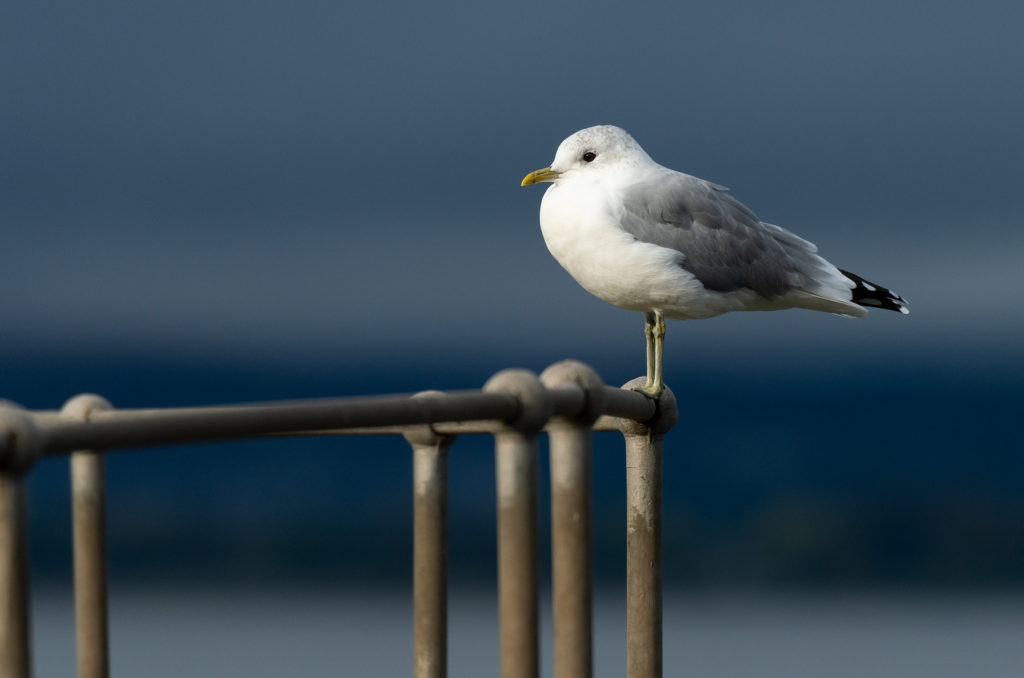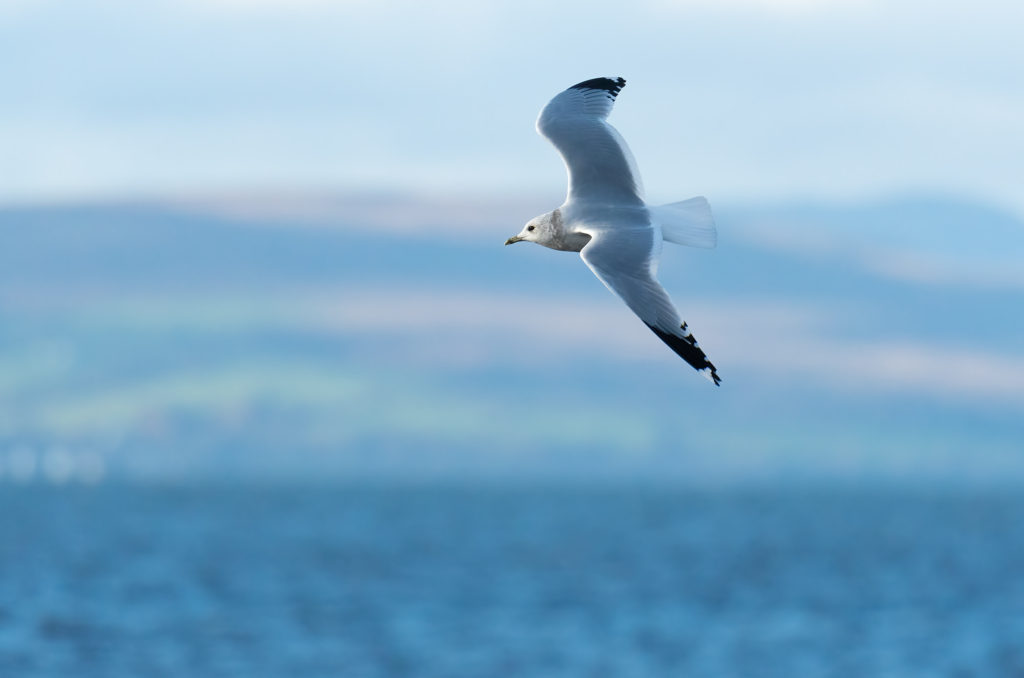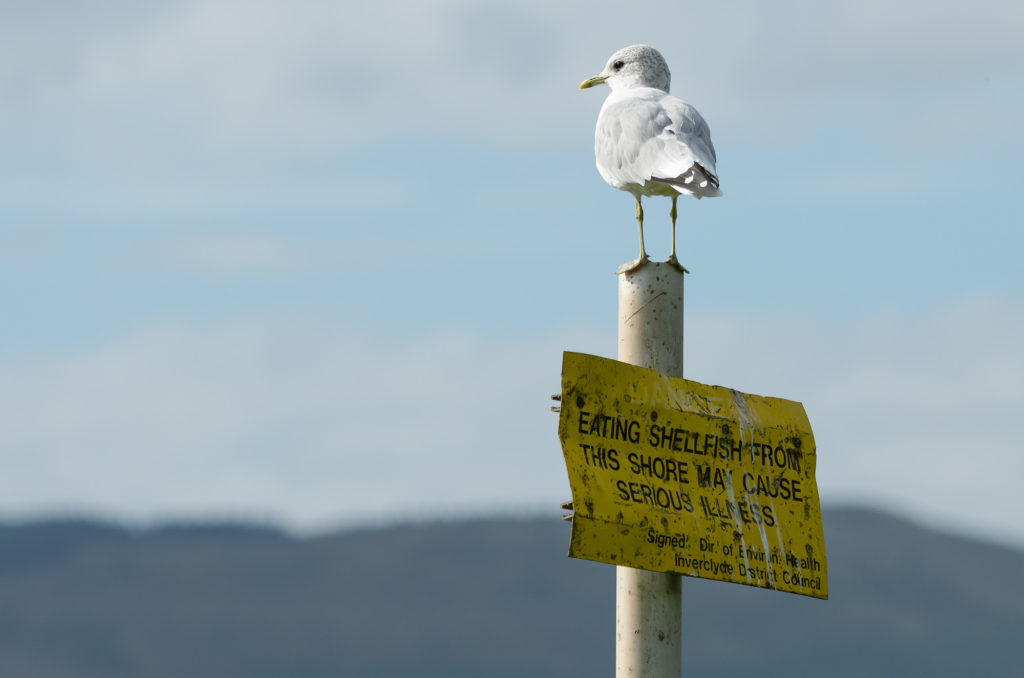I am not sure if this common gull is attempting to highlight the dangers of consuming the local shellfish. I have to confess to not noticing the sign before. So, if the aim was to draw some attention to it, it worked!
You could assume from its name that the common gull is a species that is easily spotted in the UK. In fact, it’s one of our scarcer gull species and during the breeding season, you would be most likely to see one up here in Scotland. It is an amber listed species here because of the importance of the UK for the wintering population of these birds that breed in places like Russia.
I captured the adult in winter plumage shown above on the shellfish sign at Lunderston Bay. The light was flat at times – as you can see – but this helped me ensure that both the gull and the sign popped against the backdrop of the hills in the distance. When the bright September sun made an appearance, it was much harder to work with the harsh light.

I prefer photographing gulls against moody skies, as in the image above. The contrast between the pristine white of the gull, illuminated by the afternoon sunlight, and the shadowy hills and grey sky in the background is perfect for a portrait. This common gull was happy to oblige by staying still while I changed position to get the best background possible. I photographed this stunning adult a couple of weeks ago. It is in winter plumage with grey streaks on its head and yellowy-green beak and legs.
It is easy to see why people think the common gull has a kind expression. Just look closely at this image. It’s the dark eyes that do it. The pale eyes of both herring and lesser black-backed gulls (which I adore) lead to them giving you an icy stare, which can make them seem cold and calculating. The common gull is also smaller and daintier in appearance and has a smaller and more delicate bill than the herring and lesser black-backed gulls.

Here is another of those images against a moody sky, this time with shades of blue and grey and a backdrop of green and golden hills thrown in. I captured this image at the end of last month at Largs seafront. Although I mostly disagree with feeding gulls, a lady was standing on the path and throwing what looked like bread onto the beach for the waiting birds. This provided the perfect opportunity to capture black-headed, common and herring gulls as they wheeled overhead and swooped past where we were standing. I decided to pick one gull to focus on at a time, following them in flight until they landed and then choosing a different bird. I wanted to get a variety of shots, including shooting them flying past the light from the setting sun. This bird is flying into the light and its head, along with the leading edge of its wings, is the lightest and brightest part of the image.
Oh, and I never eat the shellfish at Lunderston Bay … in case anyone was worried.


